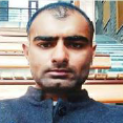International Journal of Engineering and Manufacturing (IJEM)
IJEM Vol. 14, No. 4, 8 Aug. 2024
Cover page and Table of Contents: PDF (size: 621KB)
Author(s)
Index Terms
Driver drowsiness detection system, Machine learning, Bimodule system, Region of Interest, Perclos Algorithm
Abstract
When you are driving a car and you are being responsible for your co-passenger and other innocent being on the road, you should be extra responsible. Many fatal and minor accidents happen on the road due to the drowsiness of drivers only. Hence, there is a need to detect drowsiness while driving a car. It has become an important requirement for everyone’s safety. The main objective of this study is to create a highly accurate drowsiness detection system using methods that are both affordable and easy for any car manufacturer to include in their cars. The ultimate objective is to increase road user’s protection by raising the level of safety for both drivers and their cars. This study's main contribution is the implementation of a bimodule method for drowsiness detection. The first module effectively detects signs of drowsiness by analyzing a constant stream of images of the driver in real time using a reinforcement learning model. Simultaneously, the car's second module, which is built into the steering wheel grip, keeps track of the driver's hand pressure when performing turns and emergency scenarios. The findings of the study highlight how well the proposed system works to reduce the risks associated with drowsy driving. It further highlights the value of cutting-edge technology in protecting other drivers and improving driving safety, which has the potential to save lives and avoid accidents.
Cite This Paper
Amit Kumar Jakhar, Bhupendra Kumar Pathak, Kaustubh Mishra, Rajiv Kumar, "Driver Drowsiness Detection System", International Journal of Engineering and Manufacturing (IJEM), Vol.14, No.4, pp. 26-36, 2024. DOI:10.5815/ijem.2024.04.03
Reference
[1]National Highway Traffic Safety Administration, United States (https://crashstats.nhtsa.dot.gov/Api/Public/ViewPublication/813060)
[2]Med India article on driver drowsiness in India, (https://www.medindia.net/patientinfo/drowsy-driving.htm)
[3]M. A. Kamran, M. M. N. Mannan and M. Y. Jeong, "Drowsiness, fatigue and poor sleep’s causes and detection: A comprehensive study," IEEE Access, vol. 7, pp. 167172-167186, 2019, doi: 10.1109/ACCESS.2019.2951028.
[4]M. Hashemi, A. Mirrashid, and A. BeheshtiShirazi, “Driver safety development: Real-time driver drowsiness detection system based on convolutional neural network,” SN Computer Science, vol. 1, pp. 1-10, 2020. doi:10.1007/s42979-020-00306-9.
[5]J. Singh, “Learning based driver drowsiness detection model,” 3rd International Conference on Intelligent Sustainable Systems (ICISS), pp. 698-701, December 2020.
[6]P.P. Patel, C.L. Pavesha, S.S. Sabat and S.S. More, “Deep Learning based Driver Drowsiness Detection,” International Conference on Applied Artificial Intelligence and Computing (ICAAIC), pp. 380-386, May 2020.
[7]H.V. Chand and J. Karthikeyan, “CNN Based Driver Drowsiness Detection System Using Emotion Analysis,” Intelligent Automation & Soft Computing, vol. 31, issue no. 2, February 2022. doi: 10.32604/iasc.2022.020008.
[8]R. Ayachi, M. Afif, Y. Said, and A.B. Abdelali, “Drivers fatigue detection using efficient det in advanced driver assistance systems,” 18th International Multi-Conference on Systems, Signals & Devices (SSD), pp. 738-742, March 2021.
[9]M.E Walizad, M. Hurroo and D. Sethia, “Driver drowsiness detection system using convolutional neural network,” 6th International Conference on Trends in Electronics and Informatics (ICOEI), pp. 1073-1080, April 2022.
[10]I. Jahan, K.A. Uddin, S.A. Murad, M.S.U. Miah, T.Z. Khan, M. Masud et. al, “4D: a real-time driver drowsiness detector using deep learning,” Electronics, vol.12, issue no. 235, pp. 1-17, 2023. doi: 10.3390/electronics12010235.
[11]P.K. Singh, M. Upadhyay, A. Gupta and P.S. Lamba, “CNN-Based Driver Drowsiness Detection System,” Concepts and Real-Time Applications of Deep Learning, pp. 153-166, 2021.
[12]M. Rode, S.B. AnirudhBethi, B.L.P. Kondaveti, T. Gadipally and N. Katroth, “Driver Drowsiness Detection Using Machine Learning,” International Journal for Research in Applied Science & Engineering Technology (IJRASET), vol. 10, issue no. 11, 2022..
[13]M. Zhu, J. Chen, H. Li, F. Liang, L. Han and Z. Zhang, “Vehicle driver drowsiness detection method using wearable EEG based on convolution neural network.,” Neural computing and applications, vol. 33, issue no. 20, pp. 13965-13980, 2021.
[14]Y. Choudhary, A. Aggarwal and A. Agarwal, “Detecting Drivers' Drowsiness using Haar Cascade Classifier,” 9th International Conference on Computing for Sustainable Global Development (INDIACom), pp. 318-322, March 2022. doi: 10.23919/INDIACom54597.2022.9763192.
[15]T. Xu, H. Wang, G. Lu, F. Wan, M. Deng, P. Qi et. al, “E-key: An EEG-based biometric authentication and driving fatigue detection system,” IEEE Transactions on Affective Computing, vol. 14, issue no. 2, pp. 864 – 877, 2021.
[16]E. Civik, and U. Yuzgec, “Real-time driver fatigue detection system with deep learning on a low-cost embedded system,” Microprocessors and Microsystems, 99, 104851, 2023. doi: 10.1016/j.micpro.2023.104851.
[17]M.A Assari and M. Rahmati, “Driver drowsiness detection using face expression recognition,” IEEE International Conference on Signal and Image Processing Applications (ICSIPA), pp. 337-341, November 2011.



